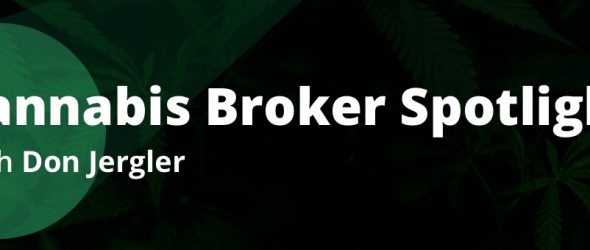Norm Ives is an old-timer in the world of insurance and cannabis.
That isn’t very long considering the relative newness of the industry, but he talks like he’s been doing it forever.
Ives is a broker and cannabis practice leader at wholesaler Worldwide Facilities LLC. He was previously cannabis program manager for Mosaic Insurance Alliance. He got his start in the insurance business with Farmers as a commercial sales specialist more than a decade ago.
Ives began placing cannabis-related policies following marijuana legalization in Washington and Colorado in 2012, and he hasn’t looked away from the blur of state-by-state legalization since.

Cannabis isn’t just his business. He spends some of his free time serving on the board of the Cannabis Alliance, a Seattle, Wash.-based group working to advance the cannabis industry.
Ives spoke with Insurance Journal about his experience as a cannabis broker.
Insurance Journal: Why did you get in the cannabis and insurance space?
Ives: I stepped into the cannabis insurance space because it was an underserved market that desperately needed coaching on insurance options. Having been in the industry for the last eight-plus years, I cannot imagine working in any other segment.
IJ: Has this been a good financial decision so far?
Ives: Yes, it has been very rewarding on a personal level and a positive move for my insurance career.
IJ: What’s the hardest thing hardest thing about the cannabis industry to deal with?
Ives: Lack of consistency and uniformity on – everything cannabis related. Whether it is the vocabulary used in the industry, the regulations from the multitude of regulatory bodies or the creativity applied to operational challenges faced by operators everything in the cannabis space looks and feels like a one off.
A good example of how this lack of uniformity can complicate your insurance placement is assuming you know what a product is and how it was derived just by the name used to market the cannabis product to the public.
For instance, shatter is a common term used for hardened cannabis extract that is generated through butane extraction, but there is nothing to stop someone extracting with CO² (instead of butane) from calling their finished product by the same name.
If a producer misclassifies the extraction exposure as butane rather than CO², they are very likely increasing the rate paid by the insured, providing incorrect information to the carrier and probably not marketing the risk to the best carriers based on the operational exposure.
IJ: What insurance product is the most difficult to obtain for your cannabis industry clients? Why?
Ives: Commercial auto, professional exposures and recently property risks all can be challenging placements. For the most part it is a lack of capacity, lack of reinsurance for the carriers and a lack of carrier participation that complicates those placements.
Because cannabis is still a Schedule 1 substance on a federal level, carrier participation continues to lag behind other emerging insurance markets.
IJ: What two or three tips do you have for brokers entering the business of insuring cannabis?
Ives: Know your network and pay attention to the constant developments in the cannabis space. You are only as good as your wholesale broker and the markets they access, knowing who has a carrier’s ear or can help find a creative solution to complex cannabis problems is something a producer will have to access daily.
This industry is moving and evolving at a breakneck pace, if you do not stay up with the developments you will get left behind.
Within the cannabis community we like to say cannabis years are like dog years, one year here is like seven years in any other emerging market.
Related:
The most important insurance news,in your inbox every business day.
Get the insurance industry’s trusted newsletter


